The Best Ways To Prevent Running Out Of Heating Fuel This Winter

If you are among the countless homeowners who rely on heating oil to keep their homes warm during freezing winters, one of the most significant concerns is monitoring your oil supply and scheduling a heating fuel delivery. After all, heating oil is an indispensable component of your household.
Oil tanks can easily slip from our focus amidst the hustle and bustle of snowfall, ski trips, and family outings during the winter. This period marks the onset of the harshest phase of winter when having a full tank is crucial. Even diligent homeowners can find themselves without fuel during the frigid winter season when it’s needed most.
An empty fuel tank can result from various factors, including:
- Neglecting to monitor oil levels consistently throughout the year.
- Insufficient funds.
- A leak in the tank system.
- Fuel theft.
Regardless of the cause, depleting your fuel oil supply can be a frustrating experience. Going without has significant consequences for your well-being and daily routines. Preventing this is simple. You can ensure a year-round fuel supply by understanding the risks associated with running out of fuel and implementing straightforward measures to avoid an empty tank.
Why You Should Avoid Running Out of Heating Oil
Contents
- 1 Why You Should Avoid Running Out of Heating Oil
- 2 Ways to Prevent Running Out of Home Heating Oil
- 3 What You Should Do If You Run Out of Oil
- 4 Call Lawes Company For Fast & Reliable Oil Deliveries
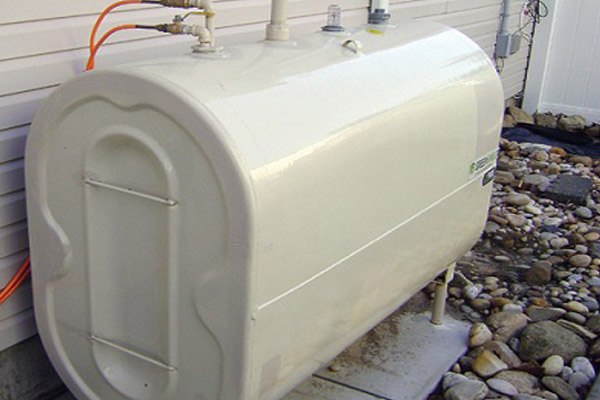
Some might downplay the importance of preventive measures, especially when you have never experienced a heating oil shortage. However, even the most diligent homeowners can occasionally forget to order a heating fuel delivery on time.
There are compelling reasons to consider timely oil purchases as an essential practice. Aside from the evident discomfort of a chilly home and the absence of hot water, here are a few of the potential risks that can happen when proactive measures are not taken to maintain a full oil tank:
Related Article: How Does Sludge Form In A Heating Oil Tank?
1. Added Fuel Expenses

Homeowners often find themselves without heating oil during the middle or end of winter. This time is also the peak of heating oil prices during the year. Running out of fuel between October and March means paying the highest rates of the heating oil season. This means an additional dollars spent for each heating fuel delivery. This adds up over time.
Aside from the elevated cost of the oil itself, emergency deliveries come with a considerably higher price tag compared to regular fill-ups. Regular, smaller fill-ups spread throughout the year often result in lower overall expenses compared to the cost of an emergency service.
2. Sludge Buildup
Sludge and debris are commonly present at the bottom of heating oil tanks. Unless your tank runs empty, they usually don’t threaten your heating oil system.
When the oil levels are low, the sludge and the remaining oil can be drawn into the supply line. If it does not obstruct the line, it will make its way to a filter, potentially causing partial or complete blockage. Blocked fuel lines or filters can reduce system efficiency or even cause a total shutdown, requiring professional intervention.
Related Article: Can I Put Diesel Fuel in My Home Heating Oil Tank?
3. Manual System Reset
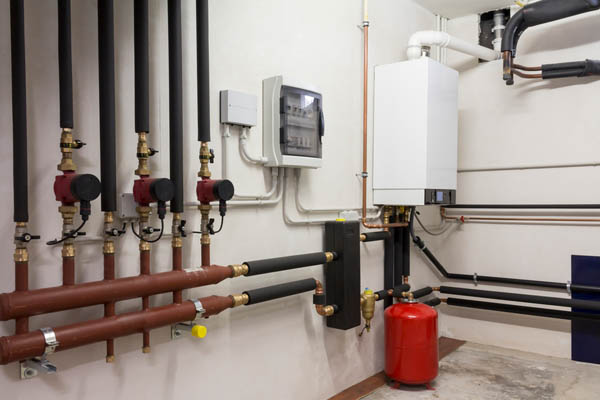
Sometimes, restoring your heating oil system after it runs out can be as straightforward as pressing a button. However, you will need a pilot light reset if the pilot light goes out.
By law, a qualified professional must carry out the pilot light reset. They will bleed the oil line and replace any clogged filters. This process can cost you more than a simple oil refill, or heating fuel delivery.
Ways to Prevent Running Out of Home Heating Oil
With the numerous risks of running out of heating oil, you should not delay securing your home’s heating needs. Take control of your well-being by adopting proactive measures needed to maintain a year-round oil supply in your heating tank.
According to industry standards, you must consistently keep your oil tank at a minimum of one-quarter full. However, this does not require constant manual checks. Take preventive actions, including the following:
Related Article: Everything You Should Know About Heating Oil Additives
1. Automatic Heating Fuel Delivery
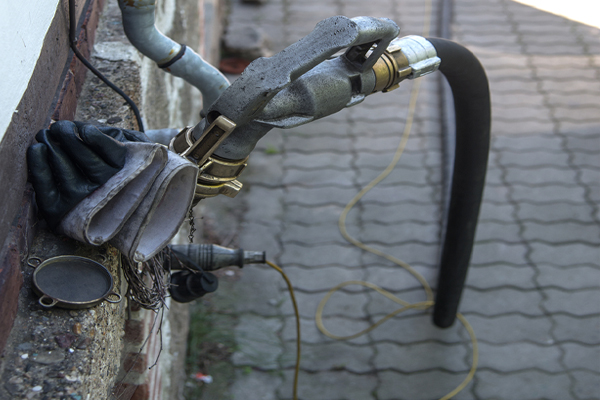
With automatic delivery services, the worry of running out of oil is a thing of the past.
And the best part? You won’t have to lift a finger. No more peering at your tank and figuring out when to schedule a refill. An automatic delivery program lets you kick back and relax while your oil company handles everything.
When you enroll in automatic delivery, your oil provider uses non-intrusive technology to monitor your oil consumption. They estimate your heating oil usage. They use basic details about your residence and household, along with calculations based on heating degree days (HDD), which measure the energy needed to warm your home based on the outdoor temperature.
By factoring in your home’s square footage, the size of your fuel tank, and historical information regarding your heating requirements, your provider can calculate HDD to predict when your tank will drop to approximately one-quarter full. Your oil provider will contact you directly to arrange a delivery when it is near this level.
Pros of Automatic Heating Fuel Delivery
Pros
- Automatic delivery is the preferred choice for most heating oil companies, boasting a high success rate in preventing empty fuel tanks.
- Automatic deliveries offer substantial cost savings compared to other preventive options. Many providers provide discounted oil prices to customers who enroll in the service, resulting in big savings over time.
- The system relies on your past heating usage patterns, tailoring deliveries to your specific requirements, ensuring you are not sold oil you don’t need. Non-intrusive calculation methods mean you can avoid concerns about invasive tank monitoring software.
Cons
- Inflexibility in accounting for unexpected spikes in heating usage, such as when hosting visiting relatives during the holidays or when reducing heating consumption during vacations. It may require manual adjustments to the delivery schedule.
- It typically involves committing to a single supplier for a predetermined duration, limiting the ability to shop for varying prices or working with a more reputable fuel company like Lawes Company.
Related Article: Get A Wi-Fi Thermostat For Your Oil-Heated Home
2. Tank Monitoring Apps and Smart Meters
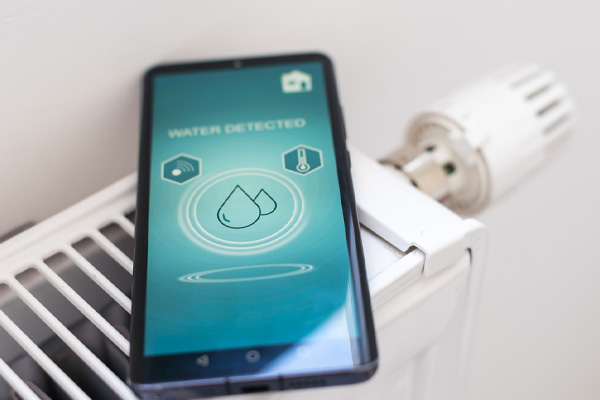
Smart technology has made its mark in virtually every industry, bringing innovation to our daily lives. From cutting-edge security systems and smart thermostats to advanced kitchen appliances, it seems that no part of our home is devoid of technological advancements. The heating oil industry has also embraced this technological wave by introducing smart oil tank meters. Smart meters allow homeowners to monitor essential metrics such as oil levels, consumption patterns, and heating costs.
Whether you are relaxing in your living room or a thousand miles away, smart software enables you to access this vital information instantly. The monitoring system relies on sensors attached to your oil tank to transmit data to your smartphone or computer, providing real-time insights and control over your heating needs. This way, you can schedule a heating fuel delivery with ample time.
Pros and Cons of Smart Meters
Pros
- Theft Detection: Many smart meter systems come equipped with built-in alarms that can promptly notify you in case of oil theft, enhancing security and peace of mind.
- Low Oil Alerts: Most smart systems are designed to alert you when your oil levels begin to dip. This provides ample time to notify your supplier and take necessary action to ensure continuous fuel supply.
Related Article: How to Read Your Heating Oil Tank Gauge
Cons
- Cost: Smart meters are among the more expensive options for tracking oil levels, with a typical smart tank monitoring system costing around $100 or more.
- Occasional Inaccuracies: There have been reported cases of rare errors in smart monitoring software, occasionally resulting in up to 50% inaccuracies in electricity monitoring systems. Although most smart oil monitoring software users find the system accurate, these isolated inaccuracies should be noted.
- Supplier Notification: In most cases, smart meters only notify you, the homeowner, of low oil levels. You will still need to proactively contact your oil provider as soon as possible to ensure a timely oil delivery and prevent running out of fuel.
The installation of a smart meter should not be attempted as a do-it-yourself project and should be handled by a professional. Fortunately, Lawes Company offers the option to install these meters during your annual heating system maintenance appointment. If you have not already scheduled an oil heating system tune-up, please don’t hesitate to contact us today to arrange one.
3. Local Tank Monitors
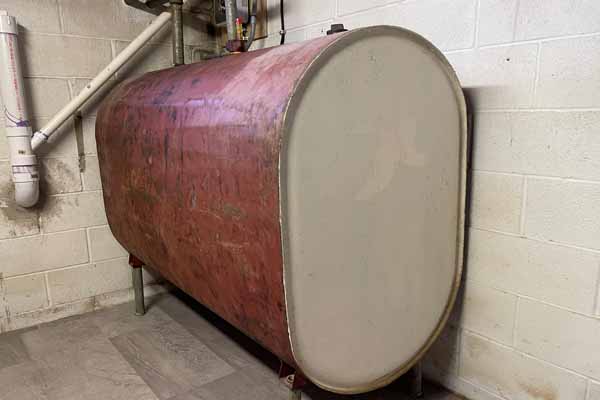
If you are looking to monitor your tank levels from the convenience of your home but lack a smartphone or other compatible device for a smart meter connection, local tank monitoring software offers a practical alternative.
Much like smart meters, local tank monitors include a transmitter that can be affixed to your oil tank. This sensor communicates with a local monitor, usually connected to an electrical socket within your home, providing a local read-out of your tank’s status.
Pros and Cons of Local Tank Monitors
Pros
- Simple Installation: These monitors are easy to install by placing the sensor in the tank and plugging the monitor into an outlet. Users without smartphones can still access tank status information.
- Low Oil Alerts: The system promptly notifies the monitor when oil levels become low, eliminating the guesswork regarding when to contact your oil provider.
- Enhanced Accuracy: Local tank monitors offer greater accuracy compared to traditional mechanical float gauges, potentially rendering gauges or dipsticks unnecessary.
Related Article: Oil Tank Condensation: What You Need To Know
Cons
- Limited Mobility: Many local tank monitors need installation within a specific proximity to the tank. It limits your flexibility compared to smart meters or automatic delivery services. Unlike some mobile monitors, most local tank monitors are powered by an electrical outlet and lack portability.
- Comparable Cost: The tank transmitter and monitoring system come with a price tag similar to smart monitoring software, typically costing around $100.
- Last-Minute Refills: Despite sending low-tank alerts, you may still need to contact your oil supplier at the last minute for a refill.
4. Alert Systems
If you are looking for a straightforward solution to be alerted about low oil levels without the complexities of smart or local monitoring systems, consider an oil tank alert system.
This system offers a no-frills approach, eliminating the need for extra data or intricate settings. It involves the installation of a gauge on your oil tank that communicates with a receiver. When your oil levels drop below a predetermined threshold, the receiver issues an audible beep or visual flash, signaling the time to contact your oil provider.
Related Article: What Size Oil Tank Do I Need For My Home?
Pros and Cons of Alert Systems
Pros
- Alert systems provide an excellent option for homeowners not well-versed in smart technology. Without screens or complex interfaces, the straightforward receiver notifies you of low oil levels without unnecessary information.
- Due to their simplicity, alert systems are a cost-effective alternative to other tank monitoring software options. You can acquire a unit at a reasonable price.
- Many receivers operate on batteries, offering flexibility in placement throughout your home.
Related Article: What Happens When The Furnace Runs Out Of Oil?
Cons
- Alert systems cannot offer valuable data regarding your oil consumption. Understanding your seasonal and daily usage patterns can help identify areas where energy and money are inefficiently used. Alert systems do not track such information.
- Similar to other tank monitoring methods, alert systems do not automatically notify your oil supplier when oil levels are low. You must still contact them on short notice to arrange a refill.
5. Manually Checking Tank Levels
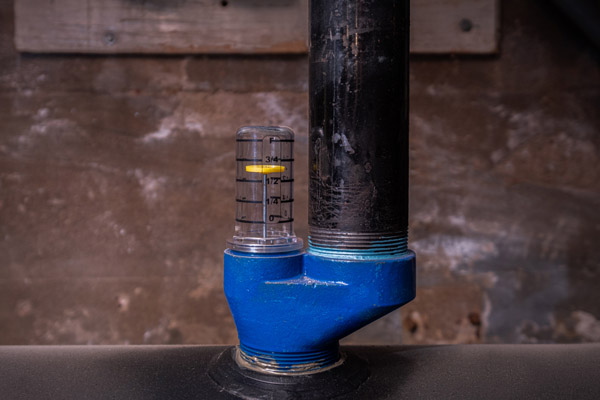
Even if your budget limits you from investing in a monitoring system or automatic delivery service, you must monitor your oil levels to avoid running out. While experts recommend against self-monitoring your oil levels, you can manually check your tank as a last resort by examining the gauge and contacting an oil supplier when you observe low levels.
Use a dipstick to assess your oil levels and determine how full your tank is. When it nears the one-quarter full point, contact your oil provider promptly to request a refill. Maintaining oil levels above the one-quarter mark is crucial to prevent running out of fuel or damaging your tank.
Related Article: What Is That Whistling Sound During An Oil Delivery?
Pros and Cons of Manual Oil Monitoring
- While manual monitoring might seem the most cost-effective choice at first, it can lead to higher costs in the long run, mainly if you overlook checking your oil levels throughout the year.
Cons
- It relies on homeowners to regularly check oil levels, which can be forgotten, especially during busy holidays. Neglecting to monitor your tank could lead to emergency refills and expensive repairs.
- Manual monitoring is the least convenient method, especially for outdoor tanks. Checking your oil tank during the harsh winter weather, including strong winds and snow, can be pretty inconvenient and uncomfortable.
What You Should Do If You Run Out of Oil
Preventive measures won’t magically refill your empty tank if you have already run out of oil. While it is essential to prevent future occurrences, you must take immediate action to restore heat to your home.
If you find yourself completely out of heating oil, these tips can guide you on what to do:
- Order an Emergency Delivery Service: Contact an emergency fuel delivery service. They can provide you with a much-needed fill-up within 24 hours of your order.
- Use a Substitute Fuel: If you run out of heating oil, you can temporarily use either kerosene or diesel to keep your home warm until the emergency services arrive. Simply fill a gasoline-safe container with five to 10 gallons of fuel from a nearby gas station. You can also use space heaters or a fireplace to provide heat while you wait for more fuel.
- Insulate Your Surroundings: To minimize heat loss and maintain a comfortable temperature indoors while waiting for the oil delivery, make sure all windows and doors are tightly closed. Use weather stripping to insulate any areas where drafts might occur.
Related Article: Top Reasons Heating Oil Prices Fluctuate
Related Article: Tips For Budgeting Home Heating Oil Costs
Call Lawes Company For Fast & Reliable Oil Deliveries

Lawes Company offers trusted and affordable heating oil deliveries. We are known for our honest heating oil prices and skilled services. Not only that, but we also offer HVAC services which also impact how much fuel your system requires to keep your home warm and safe.
We offer different heating oil plans and financing options as a way to customize your fuel deliveries to meet your needs. Be sure to contact Lawes Company today to ask for more information or request service. Click the link to view our service area.
Contact us now at (732) 741-6300 to find out more!